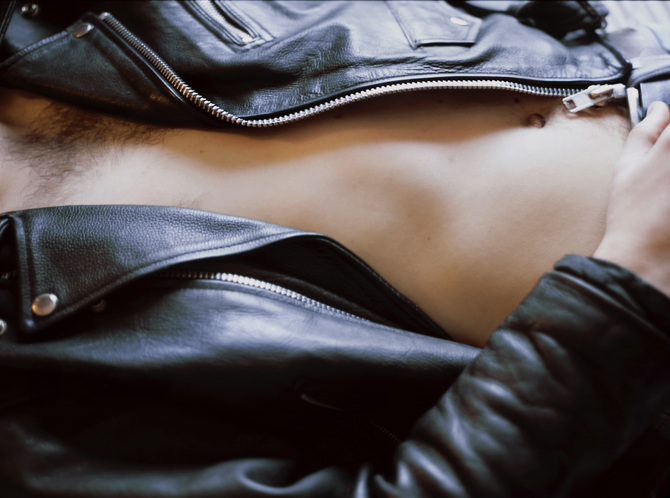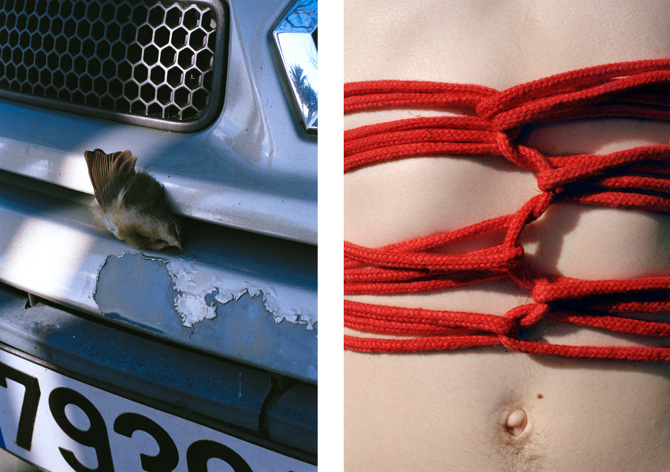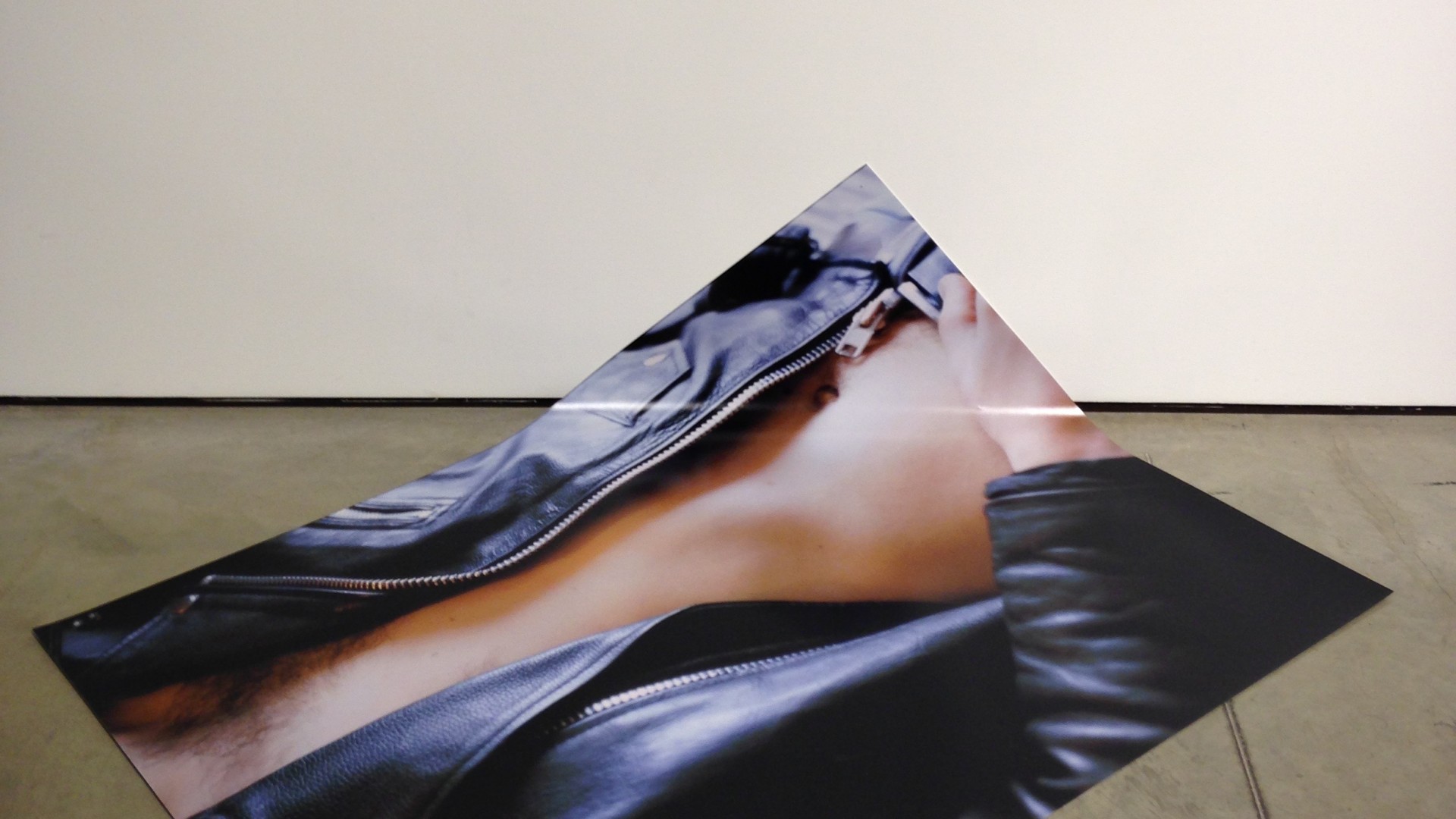Central Saint Martins Degree Show 2015
Art — 15.06.15
Words: George Upton
Image: Helena Goñi’s Tourniquet
Teeth‘s reviews of London’s degree show this year kicks off with Central Saint Martins. Since 2011 CSM has been housed in a converted granary in King’s Cross and the graduates’ artwork benefitted from the cavernous, light-filled space of the central atrium or in the galleries that ran along side it. When most student art shows are exhibited in hastily repurposed classrooms and studios and are hung precariously on unstable plasterboard, CSM is perhaps a glimpse at a more professional future for art colleges. Although the charm of cold corridors splattered with paint aggregated over decades and the smell of creative industry is absent, this new, professional space qualified the work of the graduate and post-graduate artists.
The exhibition was accompanied by a live stream broadcast during the show’s private view. Shia LaBeouf, the actor turned artist, introduced 36 short films made by the CSM artists, as part of his ongoing collaboration with Luke Turner and Nastja Säde Rönkkö. Below are Teeth‘s top picks from the exhibition, the work that impressed us and the artists we have earmarked as ones to watch, but first, here are our favourite moments from the CSM Degree Show Live stream.
1. Shia sells a plastic samurai sword (1:11:05)
2. Shia introduces an artist sitting on a beach in speedos in a British accent (1:50:27)
3. Shia gives you the motivation you need to turn your dreams into reality (2:26:53)


Helena Goñi- Tourniquet
Helena Goñi’s Tourniquet is a discussion of typical gender roles in art and photography, and of the nature of photography itself. These are pertinent but well worn themes in contemporary practice and Goñi is successful in approaching her work in a subtle and considered way. Rather than the often didactic, aggressive tone of Feminist art, her sharp closely cropped images initially appear as simple formal investigations, the focus being on shape and line and structure. It is only when considered together that the photographs form an artwork.
Goñi depicts the male figure in a variety of submissive poses – most obviously when a torso is tied in red bondage rope, but also in the sitter’s vulnerability before the gaze of the photographer and her camera. This inverts the typical situation by which most images are made – the woman passive before the male photographer, and the power that in an age of easy, irreversible and uncontrollable dissemination is particularly powerful. It is only necessary to consider the websites that collate private sexts and the availability of intimate photographs, hacked from celebrities phones, despite injections against their circulation. But far from emasculatingTourniquet’s sitter, this vulnerability suggests a trust, an intimacy between the sitter and the photographer that is tender and personal and moving. And Goñi achieves this gently, in images that are simple to look at but contain a complexity of thought and meaning.
Although Goni’s work was exhibited with other MA photographers, there is an element of the theatrical as the image of black leather and skin slides off the wall and, as if printed on rubber, lies bent on the floor, upside down – an two-dimensional medium becoming three-dimensional, further playing with accepted notions of photography.
Hyeji Woo – Untitled
The success of Hyeji Woo’s Untitled is in creating one of the more captivating works in this show from such simple and arcane materials. It comprises an overhead projector, ice and a simple structure made from metal and perspex, materials that are available to anyone, but it is a testament to Woo’s creativity that this forms an original and beautiful work. Ice, melting in the ambient temperature of the room, drips through a hole in the perspex and into a trough placed on the screen of the overhead projector. The rippling effect this produced on the walls was ethereally and simply beautiful, transcending the utilitarian materials from which the work was formed. Woo acknowledges her position as a student artist by using such materials, especially as overhead projectors were ubiquitous in classrooms before projectors were available, but uses the restrictions of the technology to her advantage.
![Georgia Tatjana Mota - Untitled [Speculative Masses] - 2](http://www.teethmag.net/wp-content/uploads/2015/06/Georgia-Tatjana-Mota-Untitled-Speculative-Masses-2-1024x768.jpg)
![Georgia Tatjana Mota - Untitled [Speculative Masses] - 3](http://www.teethmag.net/wp-content/uploads/2015/06/Georgia-Tatjana-Mota-Untitled-Speculative-Masses-3-1024x768.jpg)
Georgia Tatjana Mota – Untitled [Speculative Masses]
A mention must go to the disturbingly sexual, abstract pencil drawings of Georgia Tatjana Mota. Displayed on triangular protrusions that extended from the wall, Untitled [Speculative Masses] is a collection of uncanny, fleshy renderings that fuse together or dislocate as you move about the space, but which are consistently and compellingly unintelligible. This work represents the culmination of the artist’s research into organic forms and texture, a process limited to a monochrome palette.
Julia Parks – Botanical Film (A Study Referencing the Work of Karl Blossfeldt)
Also notable is Julia Parks’ Botanical Film (A Study Referencing the Work of Karl Blossfeldt). Soundtracked by the whir of the 16mm film projector and flickering as the frames rolled past, much of the film is lost in its digital version. Parks takes as her starting point the iconic botanical photography of Karl Blossfeldt and attempts to confront what would result if he turned his hand to film. The slow progression of plants across the camera is the product of an evidently careful research into the Victorian photographer and his methods that mimics Blossfeldt’s own research based approach to image making. Parks exhibits an interest and technical proficiency in pre-digital equipment and her film is well made, justifying the use of 16mm film which could otherwise be a gimmick in the age of Instagram.
